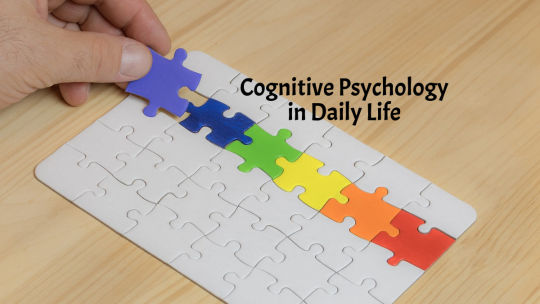#retrieval practice
Explore tagged Tumblr posts
Text
Richard James Rogers, award-winning author and pedagogical expert, describes the process of interleaving. Rogers is the first person ever to describe generalisable rules for applying interleaving in the secondary classroom.

View On WordPress
#active learning#classroom techniques#cognitive load theory#cognitive science#education#Effective Teaching#evidence-based teaching#formative assessment#instructional design#interleaving#learning science#long-term memory#memory retention#pedagogy#retrieval practice#richard james rogers#Richard James Rogers award-winning author#Richard James Rogers bestselling author#Secondary Education#spaced practice#student learning#teacher professional development#teaching#teaching strategies#The Quick Guide to Classroom Management#The Quick Guide to Classroom Management: 45 Secrets That All High School Teachers Need to Know
0 notes
Text
For anyone interested in listening, here is my Cognitive Science podcast assignment on the Testing Effect. The author of the article does some detailed research and study into the effectiveness of the Testing Effect and it's benefits to memory retrieval as I discuss some sample exercises that I could introduce into my future classroom.
Here is the reference to the article in my podcast:
Rivers, Michelle L. (2023). "Test Experience, Direct Instruction, and Their Combination Promote Accurate Beliefs about the Testing Effect". Journal of Intelligence, 11(7),147. https://doi.org/10.3390/jintelligence11070147

0 notes
Text
Cognitive Theory and Primary Science Teaching
Cognitive science is gaining increasing influence in education and many existing and developing educational approaches are described as ‘inspired by cognitive science’. Many of these approaches have been long practiced or described as effective pedagogy without any reference to cognitive science – for example, quizzing pupils on topics has been common even without this being thought of as a form…

View On WordPress
#chunking science#cognitive load#cognitive science#cognitive theory#cogsci#learning theory#retrieval practice#science theory#stem
0 notes
Text
Cognitive Psychology in Daily Life – Fastlane Freedom
Cognitive psychology is a branch of psychology that focuses on the study of mental processes, including how people perceive, think, remember, and solve problems. It explores the cognitive aspects of human behaviour, such as attention, memory, language, perception, decision-making, and problem-solving. The key objective of cognitive psychology is to understand the internal mental processes that…

View On WordPress
#cognitive enhancement#the stroop effect#growth mindset#the stroop effect experiment#mindfulness#active listening#cognitive psychology#psychological well-being#problem-solving#mindfulness techniques#problem-solving skills#cognitive psychology in daily life#mental processes#human cognition#learning strategies#spaced repetition#retrieval practice#decision-making
0 notes
Text

Shelter
#batmun's art#digimon#veemon#impmon#This was bg practice because I'm mid at them#Also because I like this shipping#I mean cmon. Black Cat and Golden Retriever vibes?? Good stuff
89 notes
·
View notes
Text
If youre sad here's some extremely lazy sketches of Golden Retriever Jason giving hugs to his friends :)




in order, the pictures are Golden Retriever Jason hugging Black Cat Nico, Golden Retriever Jason hugging Black Labradoodle Percy, Golden Retriever Jason hugging Australian Shepherd Piper, and Golden Retriever Jason hugging Chihuahua Leo.
I would've done one with Reyna too but it's too late at night 😑
#heroes of olympus#fanart#jason grace#hoo#pjo hoo#nico di angelo#percy jackson#piper mclean hoo#piper mclean#leo valdez#furry#practice sketch#shitty sketch#golden retriever energy
67 notes
·
View notes
Text

Russell, your roomates also need to sleep (bonus sausage)
#art#beastars#my art#furry#traditional drawing#traditionalart#traditional art#markers#labrador retriever#Russell#bunny#ocs#oc art#practice#meme#that one black beard meme#sausage
12 notes
·
View notes
Text

12 of 100 - Labrador Retriever
#art#artists on tumblr#drawing#sketch#practice#dog#dogs#puppy#puppies#labrador retriever#100 drawings of dogs
10 notes
·
View notes
Text
The Shamanic Practice of Soul Retrieval

Soul Retrieval is an ancient shamanic practice aimed at recovering fragmented parts of a person's soul that may have been lost due to trauma, emotional pain, or significant life events. The concept is rooted in the belief that when a person experiences trauma, parts of their soul can dissociate as a survival mechanism. This soul loss can result in feelings of emptiness, disconnection, or a lack of vitality. This post will delve into the history, process, and benefits of soul retrieval, offering a comprehensive understanding of this profound healing technique.
The Concept of Soul Loss
In shamanic belief systems, the soul is not seen as a single entity but rather a collection of spiritual energies that make up our essence. When we experience trauma, whether physical, emotional, or psychological, parts of our soul may flee as a protective mechanism. This fragmentation is often subconscious, but it can manifest in various ways, such as feelings of emptiness, dissociation, chronic depression, or a general sense of being incomplete.
Soul loss can occur due to various reasons, including:
Traumatic Experiences: Accidents, abuse, sudden loss of loved ones, or severe illness.
Emotional Pain: Heartbreak, betrayal, or significant disappointment.
Life Transitions: Major changes such as divorce, job loss, or moving to a new place.
Spiritual Intrusion: Negative energies or entities invading the soul's space.
The History and Origins of Soul Retrieval
Soul retrieval practices can be traced back thousands of years to indigenous cultures around the world. These practices are particularly prominent in Siberian, Mongolian, and South American shamanic traditions. Shamans, or shamanic practitioners, are considered intermediaries between the physical and spiritual worlds. They perform soul retrieval to recover the lost fragments and restore the individual's spiritual harmony.
Practitioners utilize various techniques to enter altered states of consciousness and journey into the spiritual realm. These techniques often include drumming, chanting, dancing, or the use of plant medicines. The goal is to locate and retrieve the lost soul fragments and reintegrate them into the person's being.
The Process of Soul Retrieval
The soul retrieval process typically begins with a thorough preparation phase. This involves:
Consultation: The practitioner meets with the person to understand their history, experiences, and symptoms of soul loss.
Setting Intention: The individual sets a clear intention for the retrieval, focusing on the specific aspects of their life they wish to heal.
The Journey
During the soul retrieval session, the practitioner enters a trance state, often facilitated by rhythmic drumming or other methods. In this altered state, the practitioner journeys to the spiritual realms to locate the lost soul fragments. This journey may involve:
Encountering Spirit Guides: Practitioners often work with spirit guides or animal totems who assist in the retrieval process.
Navigating Spiritual Landscapes: The journey can take the practitioner through various spiritual landscapes, such as forests, caves, or celestial realms.
Retrieval and Reintegration
Once the lost soul fragments are located, the practitioner gently retrieves them and brings them back to the physical world. The reintegration process involves:
Blowing the Fragments: The practitioner may blow the retrieved fragments into the person's body, typically into the heart or the crown of the head.
Energy Balancing: The practitioner works to balance the person's energy field, ensuring the reintegrated fragments harmonize with the existing soul parts.
Benefits of Soul Retrieval
Soul retrieval can facilitate profound emotional healing. By reintegrating lost soul fragments, individuals often experience a sense of completeness and inner peace. This can lead to the resolution of long-standing emotional issues, such as depression, anxiety, or grief.
Reconnecting with the lost parts of the soul can ignite a journey of spiritual growth and self-discovery. It can open pathways to deeper understanding, intuition, and connection with the divine or higher self.
Many people report significant improvements in their mental health following a soul retrieval. Symptoms of dissociation, PTSD, and other trauma-related conditions often diminish as the person becomes more grounded and present in their body and life.
Healing the fragmented soul can also have positive effects on personal relationships. As individuals become more whole and balanced, they are better able to connect with others in healthy and meaningful ways.
Integrating Soul Retrieval into Modern Healing Practices
Soul retrieval can be integrated with modern therapeutic practices, such as psychotherapy or counseling. Many holistic practitioners recognize the value of addressing the spiritual aspects of healing in conjunction with psychological and emotional therapies.
Individuals can also explore personal practices to support their soul's healing journey. Meditation, mindfulness, and other spiritual practices can help maintain the balance and integration achieved through soul retrieval.
For those interested in undergoing a soul retrieval, it is essential to seek a qualified and experienced practitioner. Recommendations from trusted sources, thorough research, and an initial consultation can help ensure a safe and effective healing experience.
Conclusion
Soul retrieval is a powerful and ancient healing practice that addresses the spiritual dimensions of trauma and emotional pain. By understanding and embracing this practice, individuals can embark on a transformative journey towards wholeness and inner harmony. Whether integrated into modern therapeutic approaches or pursued as a standalone practice, soul retrieval offers profound benefits for emotional, mental, and spiritual well-being.
As we continue to explore and integrate ancient wisdom into contemporary healing, soul retrieval stands as a testament to the enduring power of spiritual practices in nurturing the human soul. By reclaiming our lost fragments, we can move forward with greater resilience, purpose, and connection to our true selves.
#shamanism#shamanic drumming#shamanic practice#shamanic journey#shaman#soul retrieval#soul healing#soul loss#holistic healing
19 notes
·
View notes
Text
Another incorrect quote, but it’s only one, and it’s to introduce another OC



Meet Nate, the guy Fontaine eventually ends up with. Like Kari, he also started out as a ‘these submarine dwelling kids need more friends’. And while Fontaine has been shown and mentioned to have plenty of ‘land friends’ that she likes to hang out with, unlike Ant who has Jeffrey and Griffin for exactly one episode, i decided to actually design those land friends, and Nate was one of them. And like Kari, he eventually wound up filling a romantic role as well. But like Kari I made sure he was a developed character before any of that happened, so he didn’t get stuck in the ‘protagonists romantic interest’ role, with nothing beyond that pertaining to his character. Nate is the mom friend to end all mom friends, he knows how to cook, he carries sunblock and snacks everywhere, owns five fanny packs, and thinks noodle-head is a devastating insult. I talk a bit more about him in one of my Ao3 fics, which at this point is entirely Incorrect Quotes and headcanons, and exactly one Oneshot I’m genuinely considering reposting as it’s own story because I don’t see any other oneshots making their way into that story with how long it takes me to write them
#they’re about 17/18 here#which in my timeline of how The Deep goes is meant to be near the tail end or after all that Chosen One stuff is dealt with#Nate still gets dragged along on Nekton shenanigans though. screaming about safety first and why is that fish so big the whole way#but Nate heard about Fontaiens last boyfriend#an ex-pirate who also lived on a submarine#saw a photo of him#and panicked a little#(little does he know Finn’s just a dramatic loser (affectionate) with the soul of a bad musician)#the eyeliner is because his little sister wanted to practice makeup and he could never say no#Nate is the epitome of a Golden Retriever. he couldn’t bad boy if his life depended on it#the deep 2015#the deep cartoon#incorrect quotes#fontaine nekton#the deep oc
17 notes
·
View notes
Text

everything about this passage is golden
#screaming into the void#liveblogging i guess#>:( literally got right to the start of the daroga's narrative and then had to immediately clock into work without even starting it >:(#anyway raoul golden retriever energy vs. daroga blunt practicality: FIGHT#going to go be semi-productive now. blah blah blah#poto#poto leroux#raoul de chagny#the daroga#nadir khan
8 notes
·
View notes
Text

A dog portrait
7 notes
·
View notes
Text

Decided to do some realism practice and I’m VERY happy with the result!!
#Realism#realistic dog#Realistic practice#Golden retriever#Dog#Shading practice#Lighting practice#Art#My art#Artists on Tumblr#Digital art#Procreate#Procreate realism
23 notes
·
View notes
Text

for @lovingcollectiveangel <3
2 notes
·
View notes
Text
Soul Shard Bag
This magic item is exceedingly useful to an advanced necromantic practitioner. It allows them to collect and store soul shards for later use. When a human being suffers a traumatic event in their life, a small part of their soul fissions off and is left behind. This is part of the process known as soul loss a magical illness known to some shamanistic religions. A person who experiences enough trauma gradually becomes more apathetic and listless, eventually becoming what is called a Hollow Man/Woman. Shamans treat this by undergoing a spirit journey to retrieve the soul shard and then reunite it with the owner.
However an advanced necromantic practitioner can learn how to use these soul shards to their advantage. One way is to graft a number of soul shards into a complete chimeric soul. This can then be used for crafting, energy, spirit bargaining, etc. Another way is to graft the soul shard to a spirit being which does not normally possess a soul, thus allowing it to experience mortality. Yet another is to graft the soul shard to oneself which if compatible can accelerate spiritual ascension and growth. There are still more uses but this is not the point of this post.
To make the soul shard bag simply take a black drawstring bag and place within a magically charged piece of onyx. Then the bag should be taken into a burial site and exposed to the energies at such a location. To use it carry it with you and simply open it at accident sites, crime scenes, locations where violent sports are played, or at hospitals. The soul shards left behind at such sites will be drawn into the stone within and will remain there until utilised.
One important thing to note is that actually being able to use the souls within is something that unfortunately many practitioners will never be able to do. This is do to the fact that many spiritual entities including certain deific beings do not allow just anyone to mess around with souls. It usually requires patronage and permission from such beings and usually comes with stringent rulesets.
#soul shards#soul magic#soul loss#necromancy#advanced practice#manipulating souls#magic item#simple enchantment#soul retrieval#death magic#reaping#onyx
5 notes
·
View notes
Text

The tape was uneven that's why it's crooked lol. Dogs can have just as much attitude as cats. Don't even get me started on huskies.
I'm also just taking to leaving the sketch whenever I paint now as a sort of feature. Not sure if it adds to it or not especially since this is such a light subject. The other day this wasn't gelling so I slept on it and realized it needed more dark contrast. Good call me. :)
This also revealed to me that I need to do more water studies as well.
4 notes
·
View notes